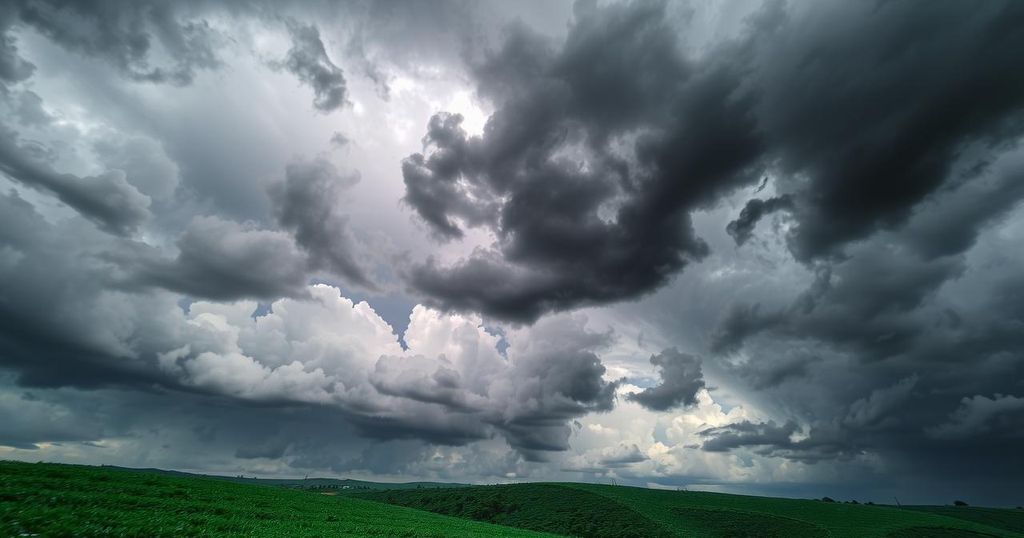Weather
AFRICA, CLIMATE, DAVID GIKUNGU, DEPARTMENT, DISASTER MANAGEMENT, FLOODING, KAJIADO, KENYA, KENYA METEOROLOGICAL DEPARTMENT, KENYA METEOROLOGICAL DEPARTMENT WAR, KENYA METEOROLOGICAL SERVICES, KIAMBU, KISUMU, METEOROLOGICAL DEPARTMENT, METEOROLOGY, NAKURU, NYERI, RAIN, WEATHER FORECAST
Fatima Khan
0 Comments
Kenya Meteorological Department Issues Warning for Heavy Rains and Flooding Risk
The Kenya Meteorological Department has warned of heavy rain expected starting March 9th, with potential flooding across multiple regions. Residents are advised to exercise caution, especially in specified counties. The rainfall aligns with the onset of Kenya’s long rainy season, crucial for agriculture but also posing risks to communities.
The Kenya Meteorological Department has issued a warning for imminent heavy rainfall beginning Sunday, March 9th, affecting multiple regions in the country. Residents are urged to be vigilant as the anticipated downpour may lead to significant flooding and flash floods. Initially, rain amounts are expected to surpass 20mm, increasing to over 30mm within a 24-hour period starting March 10th. This rainfall is predicted to extend to areas in northwestern Kenya before subsiding around March 11th, according to Dr. David Gikungu, Director of Kenya Meteorological Services.
A range of regions are identified as being particularly at risk, including the Lake Victoria Basin, segments of the Rift Valley, and the highlands to the west and east of the Rift Valley, which encompass the Nairobi metropolitan area. Counties such as Narok, Kericho, Kisumu, Nyeri, Bomet, Bungoma, Nakuru, Machakos, Kajiado, Kiambu, Kisii, Nyandarua, and Turkana are highlighted as areas of heightened concern.
Citizens are strongly advised against taking shelter under trees or near grilled windows during thunderstorms due to the increased danger posed by lightning. The Meteorological Department has committed to providing updates if there are changes in the weather outlook. This warning coincides with the onset of Kenya’s long rains season, spanning from March to May, with April typically recording the highest precipitation, often occurring during the Easter holidays.
The weatherman counsels, “Residents in all the mentioned areas are advised to be on the lookout for potential floods, flash floods, and poor visibility.” Certain regions, such as the Lake Victoria Basin and the Central and South Rift Valley, usually receive seasonal rainfall exceeding 300mm, which is essential for agricultural productivity and the replenishment of water resources. However, these rains also pose challenges, such as infrastructure damage, community displacements, and increased public health risks.
In summary, the Kenya Meteorological Department has issued an alert for heavy rainfall beginning March 9th, with the potential for flooding and flash floods in various regions. Specific counties at risk include Narok, Kisumu, and Kiambu, among others. Citizens are advised to take precautions to avoid lightning hazards during thunderstorms. While the seasonal rains are crucial for agriculture, they also present significant challenges that could impact communities and infrastructure.
Original Source: mwakilishi.com




Post Comment